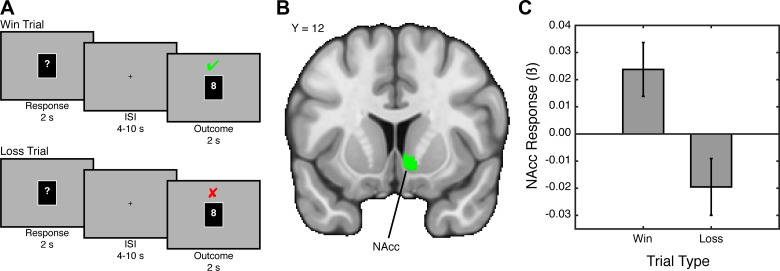Fig. 2.
Gains and losses modulate activation in the striatum. A: a popular approach to studying reward processing employs a card-guessing task. In this paradigm, subjects are presented with a card and asked to guess whether the number on the card (range: 1–9) will be higher or lower than 5. If the subject guesses correctly, he or she wins money. However, if the subject guesses incorrectly, he or she loses money. B: contrasting positive outcomes or win trials against negative outcomes or loss trials reveals activation within the striatum. Here we focus on the nucleus accumbens (NAcc). C: within the NAcc, the responses to wins (depicted with parameter estimates) are higher than the responses to losses. Figure used data from Fareri et al. (2012).

